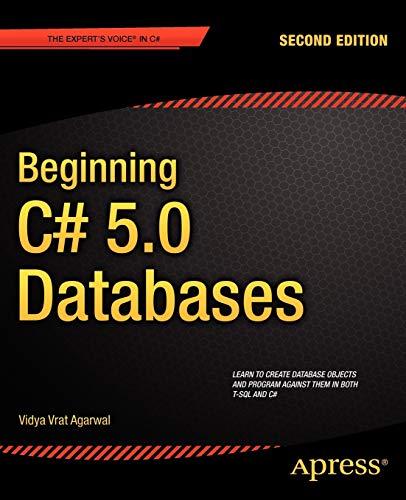Question
Class A defines a method called clear(). Class B, extends class A and provides a method clear() (it has the same prototype as the one
Class A defines a method called clear(). Class B, extends class A
and provides a method clear() (it has the same prototype as the one in class A).
Which clear() method will be called in the following code fragment if we assume
early/static binding is being used? You can assume A and B have default
constructors.
A obj = new B();
obj.clear();
a. The clear() method of class A.
b. The clear() method of class B.
c. The clear() method in the Object class.
d. None of the above.
Class A is an abstract class with a single abstract method called analyze().
Class B extends class A, only defines a single non-abstract method called task(),
and does not provide an implementation for analyze(). Which of the following
are true?
a. Class B will compile whether it is defined abstract or not.
b. Class B must be defined abstract, otherwise the code will not compile.
c. We can create instances of B, but not of A.
d. None of the above.
The average(int x) method in a class called "Tools" performs a special
average computation. We would like classes extending the "Tools" class
to use the method, but not to change the computation the method does.
How should the average method be defined in order to provide this guarantee?
a. The method should be defined as protected.
b. The method should be defined as static.
c. The method should be defined as final.
d. None of the above.
The method sum() is called in the linearize() method. If sum() can throw
a checked exception, then:
public void linearize() {
sum();
}
a. The above linearize() method will compile.
b. The above linearize() method will not compile.
c. None of the above.
A set of tests generate 90% test coverage for a piece of code. This means that:
a. 90% of the code has no bugs and 10% has bugs.
b. 90% of the code has no bugs and 10% may or may not have bugs.
c. 90% of the code has bugs and 10% has no bugs.
d. None of the above.
In the expression a.separate(b), a and b are reference variables
of the same type. Inside of the separate method, which object
is associated with the current object reference ("this")?
a. The same object associated with a.
b. The same object associated with b.
c. There is no object associated with "this".
d. None of the above.
A Car class does not define an equals method (one that returns a
boolean and has an Object reference parameter). If a and b are Car
references, a.equals(b) is equivalent to:
a. a == b
b. a != b
c. a < b
d. None of the above.
Step by Step Solution
There are 3 Steps involved in it
Step: 1

Get Instant Access to Expert-Tailored Solutions
See step-by-step solutions with expert insights and AI powered tools for academic success
Step: 2

Step: 3

Ace Your Homework with AI
Get the answers you need in no time with our AI-driven, step-by-step assistance
Get Started


